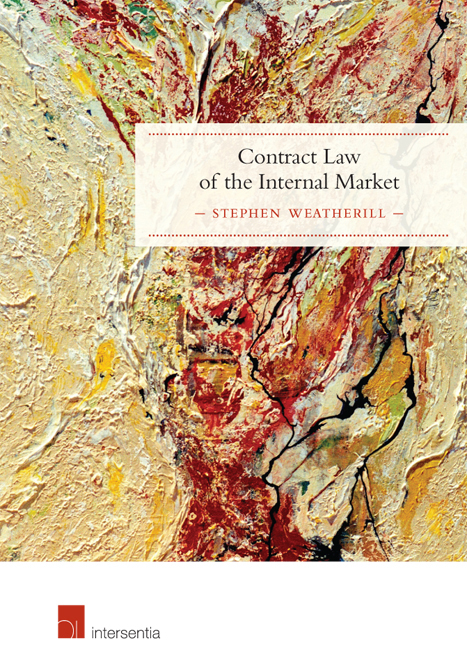Book contents
- Frontmatter
- Preface
- Contents
- Table of Cases: Alphabetical
- Table of Cases: Chronological
- Chapter 1 The Landscape of Contract Law in the EU
- Chapter 2 Contractual Autonomy and National Contract Law in the Internal Market
- Chapter 3 The EU as a Source of Contract Law
- Chapter 4 Themes and Principles in the EU's Contract Law Acquis
- Chapter 5 Improving the Regulatory Environment
- Chapter 6 Models of Harmonisation: Maximum or Minimum
- Chapter 7 Measuring the Effects of the Contract Law of the Internal Market
- Index
Chapter 4 - Themes and Principles in the EU's Contract Law Acquis
Published online by Cambridge University Press: 19 September 2018
- Frontmatter
- Preface
- Contents
- Table of Cases: Alphabetical
- Table of Cases: Chronological
- Chapter 1 The Landscape of Contract Law in the EU
- Chapter 2 Contractual Autonomy and National Contract Law in the Internal Market
- Chapter 3 The EU as a Source of Contract Law
- Chapter 4 Themes and Principles in the EU's Contract Law Acquis
- Chapter 5 Improving the Regulatory Environment
- Chapter 6 Models of Harmonisation: Maximum or Minimum
- Chapter 7 Measuring the Effects of the Contract Law of the Internal Market
- Index
Summary
INTRODUCTION
The EU's legislative acquis affecting contracts and contract law is constructed in line with the constitutionally generous approach mapped in the previous chapter.
Free movement law opens up the internal market by releasing contractual autonomy from the restrictive effect of regulatory barriers to cross-border trading freedom. Then that contractual autonomy is conditioned by controls in the name of competition law. This was covered in Chapter 2. But the limits of free movement law, represented by the available scope to justify barriers to inter-State trade, are also the limits of the internal market as a project built exclusively on deregulation of national markets. Where barriers to inter- State trade survive testing against the standards set by free movement law, progress to the creation of an internal market depends on their (partial or total) replacement by EU-level rules. This is harmonisation. It is the legislative supplement to the judicially driven process of market-making that is founded on the non-absolute requirements of free movement law. Chapter 3 examined this process, and it showed that harmonisation entails deregulation too, in the sense that a multiplicity of diverse national rules are boiled down to a single common rule, set at EU level. But there is a common rule, so the process is deregulatory but simultaneously re-regulatory, in the sense that the EU takes over the responsibility to regulate the market that was previously the preserve of the Member States, performing that task in divergent fashions. In this sense legislative harmonisation has a dual function – both to secure the integration of the markets (by establishing a common rule) but also to set the terms according to which conduct shall be (re-)regulated within that integrated market (by establishing a common rule). Chapter 3 explained that this dual function is commanded by the Treaty, especially Articles 12, 114(3), 168(1) and 169(1) TFEU, and the Charter of Fundamental Rights, especially Articles 35, 37 and 38, and moreover it has been relied on in a legally significant way by the Court in determining that harmonisation properly possesses this dual function. So the Court in the first Tobacco Advertising case did not deny that public health policy and concern for consumer protection may legitimately inform the shaping of the harmonisation programme – quite the reverse.
- Type
- Chapter
- Information
- Contract Law of the Internal Market , pp. 95 - 190Publisher: IntersentiaPrint publication year: 2016



